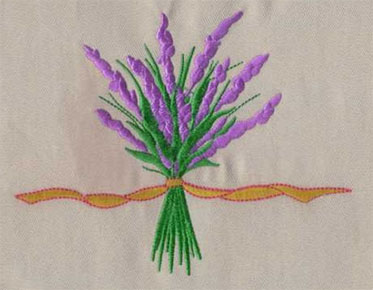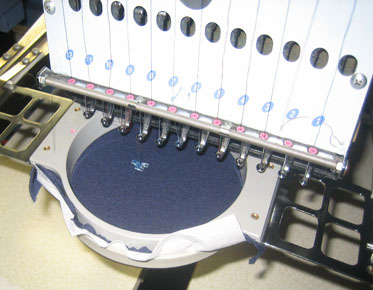Accommodating Different Stitch Types in the Embroidery Digitizing Process
Embroidery digitization is a complex process
that involves translating designs into stitch instructions for embroidery machines.
One crucial aspect of this process is accommodating different types of stitches
such as satin, run, or fill stitches. Understanding how the digitizing process
accommodates these stitch types is essential for achieving high-quality
embroidery results. This article explores the considerations and techniques
involved in accommodating different stitch types during the embroidery digitization process.
I. Understanding Stitch Types in Embroidery
1.1 Satin Stitches:
Satin stitches are long, smooth, and
continuous stitches used for creating bold lines, lettering, or decorative
elements with a glossy appearance. They require precise digitizing to maintain
their smoothness and avoid gaps or puckering.
1.2 Run Stitches:
Run stitches are single, continuous stitches used for creating outlines or fine details. They are versatile and commonly used for simple shapes, lettering, or intricate designs that require fine lines or details.
1.3 Fill Stitches:
Fill stitches are used to fill larger areas
with stitches, creating a solid or textured appearance. They can be digitized
in various patterns such as parallel lines, zigzags, or complex patterns like
stippling or lattice. Fill stitches require proper underlay and stitch direction
to ensure stability and coverage.
II. Digitizing Techniques for Different Stitch Types
2.1 Satin Stitch Digitization:
To achieve high-quality satin stitches, professional digitizers consider
factors such as stitch density, stitch length, and stitch direction. They create
smooth curves and avoid sharp angles or tight turns to prevent puckering or
distortion. Proper underlay is added to stabilize the satin stitches and
maintain their desired shape.
2.2 Run Stitch Digitization:
Digitizing run stitches requires attention to stitch density, stitch length, and pathing. Proper sequencing ensures the smooth flow of the stitch path, reducing unnecessary jumps or thread breaks. Digitizers also adjust stitch length to achieve the desired level of detail and ensure proper registration of outlines or fine details.
2.3 Fill Stitch Digitization:
When digitizing fill stitches, the digitizer
determines the appropriate stitch type (e.g., parallel, zigzag, or complex fill
patterns) based on the embroidery design
requirements. They consider stitch density, stitch direction, and underlay to
achieve consistent coverage, prevent fabric show-through, and ensure proper registration
of the fill pattern.
III. The Role of Embroidery Digitizing Services
3.1 Professional Expertise:
Embroidery digitizing services
play a crucial role in accommodating different stitch types. Their experienced
digitizers possess in-depth knowledge of stitch techniques, fabric
considerations, and design optimization. They can accurately interpret design
artwork and select the most suitable stitch types for achieving the desired
embroidery outcome.
3.2 Customization for Stitch Effects:
Digitizing services for embroidery offer customization options for stitch effects. They can create special effects such as gradient fills, textures, or intricate patterns to enhance the visual appeal of the embroidery design. Their expertise ensures that the digitized stitches align with the design concept and produce a professional and aesthetically pleasing result.
FAQs:
1. Are embroidery digitizing services
necessary for accommodating different stitch types?
Embroidery digitizing services bring expertise
and precision to the digitizing process, ensuring the accurate interpretation
of designs and selection of appropriate stitch types. They help optimize the
digitization process and achieve high-quality results, especially when accommodating
complex stitch types.
2. Can the same digitized design accommodate
different stitch types?
Yes, a single design can incorporate various
stitch types by adjusting the digitizing parameters. Digitizers can modify
stitch length, density, and direction to accommodate different stitch types
within the design, providing versatility and creativity.
3. How long does it take to digitize designs with
different stitch types?
The time required to digitize designs with
different stitch types depends on factors such as design complexity, stitch
density, and digitizer expertise. Digitizing intricate designs or designs with
complex stitch types may take longer to ensure precision and quality.
Conclusion:
Accommodating different stitch types in the embroidery digitizing process is
crucial for achieving high-quality embroidery results. Understanding the
characteristics and techniques associated with satin, run, and fill stitches
allows digitizers to optimize the digitization process. Embroidery digitizing
services play a significant role in providing professional expertise and
customization options, ensuring accurate interpretation and implementation of different
stitch types. By employing the right techniques and seeking professional
assistance, digitizers can achieve stunning embroidery outcomes that showcase
the beauty and versatility of different stitch types.



